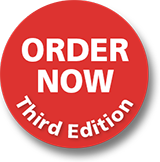Chapter 17 – Reading and writing different text types
Chapter Summary
According to the Genre Diversification Framework, the early literacy program should aim for: one-third narrative genres, one-third informa- tion genres and one-third other genres. Young children enjoy reading and writing information books as well as fiction texts. Much of the reading and writing that is covered in later schooling concerns reading information texts, so learning the text features of information books is essential. Features such as glossaries, headings, diagrams and indexes need to be taught to young children.
Many teachers use six main genre types when teaching children about different types of text: recount, narrative, procedure, explanation, report and argument. Each of these genres has a different framework and language features.
Study Questions
Main ideas
What is a narrative text? What is an information text?
In your opinion, what are the language features of three of the most common text types?
What is the Genre Diversification Framework and how would this work in an early childhood setting?
Application to a developmental stage
Read the examples of everyday texts such as a chip packet and a business card. Is there another everyday text you can think of to deconstruct and construct with children? Explain this idea.
Diverse learners
In the case study on animals, how are leaners with diverse abilities catered for?
Assessment
If you were assessing a report on an animal, what criteria would you use for assessment in a Year 2 class?
Teaching plans
Check the different teaching activities in the figure 17.2. What are the most useful for the age group that you plan to teach?

